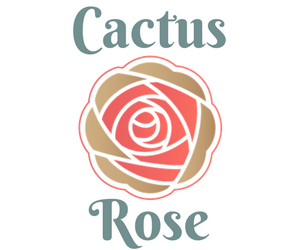From a fleeting glance across a crowded room to a brief handshake at an interview, first impressions shape how we perceive and relate to others often before a single word is spoken.
Psychology reveals that these rapid judgments form within milliseconds and can significantly influence social, professional, and personal outcomes. But how accurate are these snap evaluations? And how long does it really take for our minds to settle on an impression?
In this article, we explore the science behind first impressions: the surprising precision of our “thin-slice” assessments, the cognitive biases that cloud our judgment, and the brief window during which our brains decide who someone is.
Understanding these dynamics can help us navigate social interactions more thoughtfully and foster better relationships over time.
How Accurate Are First Impressions?

The accuracy of first impressions is a nuanced topic. On one hand, research in thin-slice judgments has demonstrated that even strangers observing very limited behavioral cues can on average make above-chance predictions of certain traits and outcomes. On the other hand, first impressions are also prone to systematic biases and errors.
Evidence for Accuracy
- Trait Inference. Ambady and Rosenthal’s meta-analyses (1993, 2011) across dozens of studies found that thin-slice judgments of personality and affective traits correlate with longer-term, more comprehensive measures (average r ≈ .39 for personality traits; r ≈ .56 for teaching effectiveness). This implies moderate accuracy in gauging global traits from minimal data.
- Personality and Leadership. Studies show that job applicants’ first impressions in structured interviews predict later supervisor ratings and peer evaluations, with effect sizes around r = .25 to .35. Similarly, political candidates’ brief video clips of facial expressions or vocal tone predict election outcomes beyond chance.
Sources of Error
- Stereotyping and Prejudice. Implicit stereotypes (e.g., racial, gender, age) can taint first impressions. Observers may conflate ethnic appearance with assumed traits, leading to systematic inaccuracies when stereotypes do not hold.
- Halo/Horns Effects. A single salient feature (e.g., attractiveness) can create generalized positive (halo) or negative (horns) biases across unrelated trait domains. Attractive individuals are often judged more trustworthy and competent, regardless of actual abilities.
- Context and Expectation. The context in which an encounter occurs (e.g., formal interview vs. casual party) and observers’ prior expectations (e.g., reputational information) modulate and can distort first impressions.
Overall Balance
Meta-analytic reviews suggest that, on average, first impressions yield modest-to-moderate accuracy for broad personality traits and behavioral outcomes, but they vary widely by trait domain, observer expertise, and the presence of confounding biases. In high-stakes contexts reliance on unstructured snapshots can incur significant errors; structured assessments and repeated observations remain essential.

How Long Does It Take to Make a First Impression?
Psychologists have examined the temporal dynamics of impression formation, asking: “How much exposure do we need before forming a stable evaluation of another person?”
- Milliseconds Matter. EEG and eye-tracking studies reveal that facial evaluations of trustworthiness and dominance occur within 100-200 milliseconds of stimulus presentation often before conscious awareness. The amygdala and prefrontal structures activate rapidly in response to socially salient cues.
- Split-Second Decisions. In behavioral tasks, participants who view a face for as little as 33 milliseconds and then mask it can still reliably judge trustworthiness at above-chance levels. Exposure durations beyond 100–200 milliseconds yield similar judgment profiles, implying a speed ceiling.
- Seconds to Stabilize. While initial orientation occurs almost instantaneously, slightly longer exposures allow integration of nonverbal cues tone of voice, gestures, posture and refine initial “guesses.” Experimental work shows that judgments made at 1 second and 3 seconds are highly correlated indicating that most rating variance emerges early and changes little thereafter.
- Beyond Five Seconds. Extending exposure to 10-30 seconds may fine-tune or occasionally reverse early impressions, especially with conflicting cues. Yet, because of the primacy effect, these revisions often require substantial contradictory information to override the initial frame.
In summary, while neural and cognitive processes begin evaluating social stimuli within a few hundred milliseconds, impressions become reasonably stable within 1–5 seconds of exposure. Further information accrual refines these judgments, but does not fundamentally alter the first impression in most cases.
Practical Implications and Considerations

Social and Professional Contexts
- Interviewing and Selection. Awareness of first impression effects can guide structured interview designs that mitigate snap biases e.g., standardized questions, blind résumé reviews, and later-stage competency tasks.
- Marketing and Design. Brands leverage first impression theory by optimizing website load times (under 2 seconds), using high-quality images, and ensuring clear, trustworthy messaging, recognizing that visitors’ judgments form almost instantaneously.
- Cross-Cultural Interactions. Recognizing that implicit personality theories and nonverbal norms vary across cultures, global organizations invest in intercultural training to prevent misinterpretation of rapid judgments.
Personal Awareness
- Mindfulness of Bias. Individuals can mitigate misleading impressions by deliberately seeking disconfirming evidence, pausing before acting on initial judgments, and reflecting on potential stereotypes.
- Self-Presentation. Understanding the rapidity of impression formation encourages attention to nonverbal demeanor eye contact, posture, facial expression and vocal modulation during brief encounters, such as elevator pitches or first meetings.
ADHD and Maintaining Motivation
- For individuals with ADHD, staying motivated in social and professional settings is challenging due to impulsivity and distractibility affecting first impressions. Recognizing how quickly impressions form helps them prepare ADHD-specific strategies like structured routines, mindfulness, and external reminders to manage impulses, maintain focus during key moments, and sustain motivation over time.
The Impact of First Impressions on Long-Term Relationships

The Impact of First Impressions on Long-Term Relationships
First impressions shape how relationships develop over time. A positive initial impression often leads to greater trust and cooperation, influencing future interactions positively.
On the other hand, a negative first impression can create barriers that are hard to overcome. However, with ongoing interaction and new information, people can revise their early judgments. Being aware of the power of first impressions helps us build better personal and professional relationships.
- The Role of Positive First Impressions
A positive initial impression often fosters trust and cooperation. When we start off with a good feeling about someone, we tend to interpret their future actions more favorably, which helps build stronger, more collaborative relationships.
- Challenges of Negative First Impressions
Negative first impressions can create lasting barriers. Distrust or skepticism arising early can make people less open and harder to connect with, potentially limiting relationship growth.
- Revising First Impressions Over Time
Despite the strength of initial judgments, ongoing interactions and new information allow people to adjust their views. Repeated experiences can help overcome early biases and improve understanding.
- Practical Implications
Being aware of how powerful first impressions are encourages us to approach new relationships mindfully and remain open to updating our judgments
Conclusion
First impressions are powerful, rapid judgments that shape our social interactions from the very first moment we meet someone.
While research shows that these snap evaluations can be surprisingly accurate especially in assessing broad personality traits or leadership potential, they are not infallible. Importantly, first impressions form within milliseconds to a few seconds, yet they are not set in stone.
Ongoing interactions and new information can refine or even overturn early assumptions, allowing relationships to grow beyond those initial snapshots.
By understanding the science behind first impressions, we can better navigate social and professional encounters balancing swift intuition with mindful reflection to build more meaningful and authentic connections.
